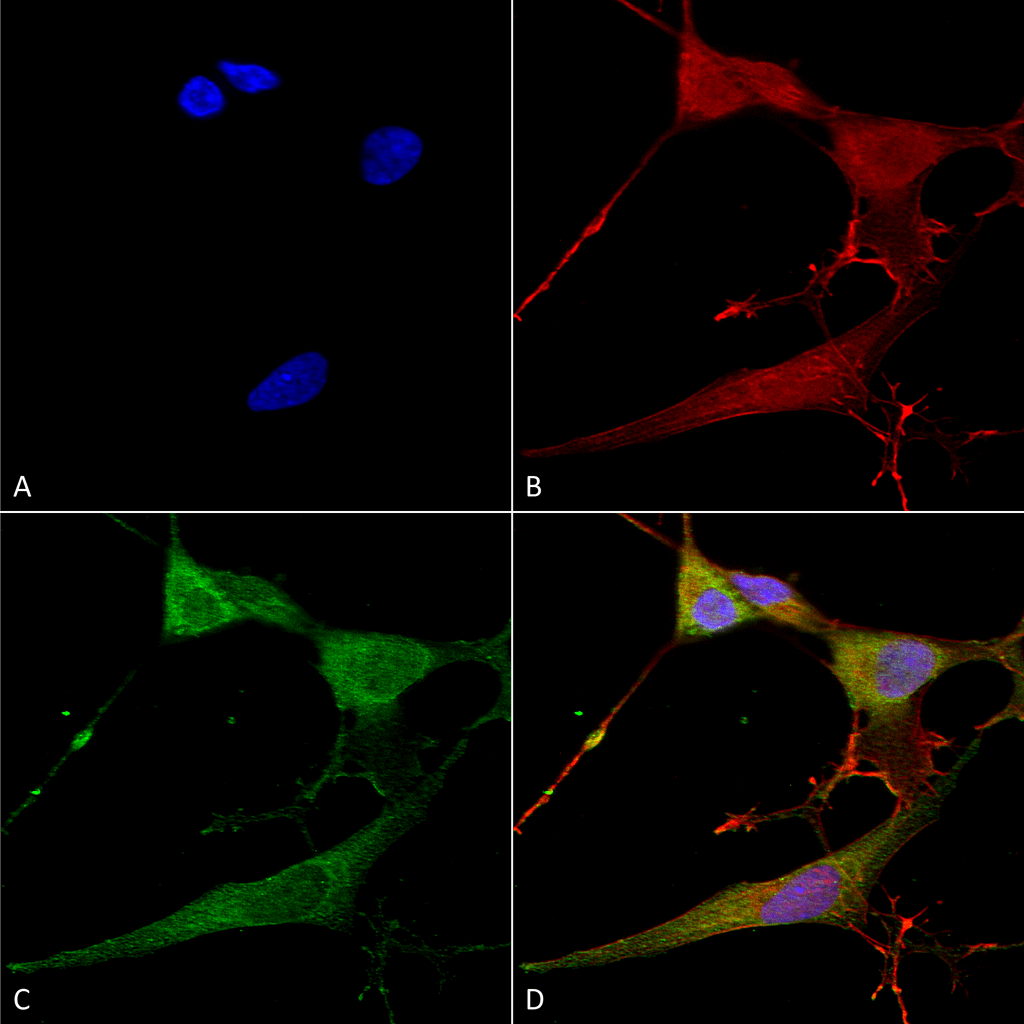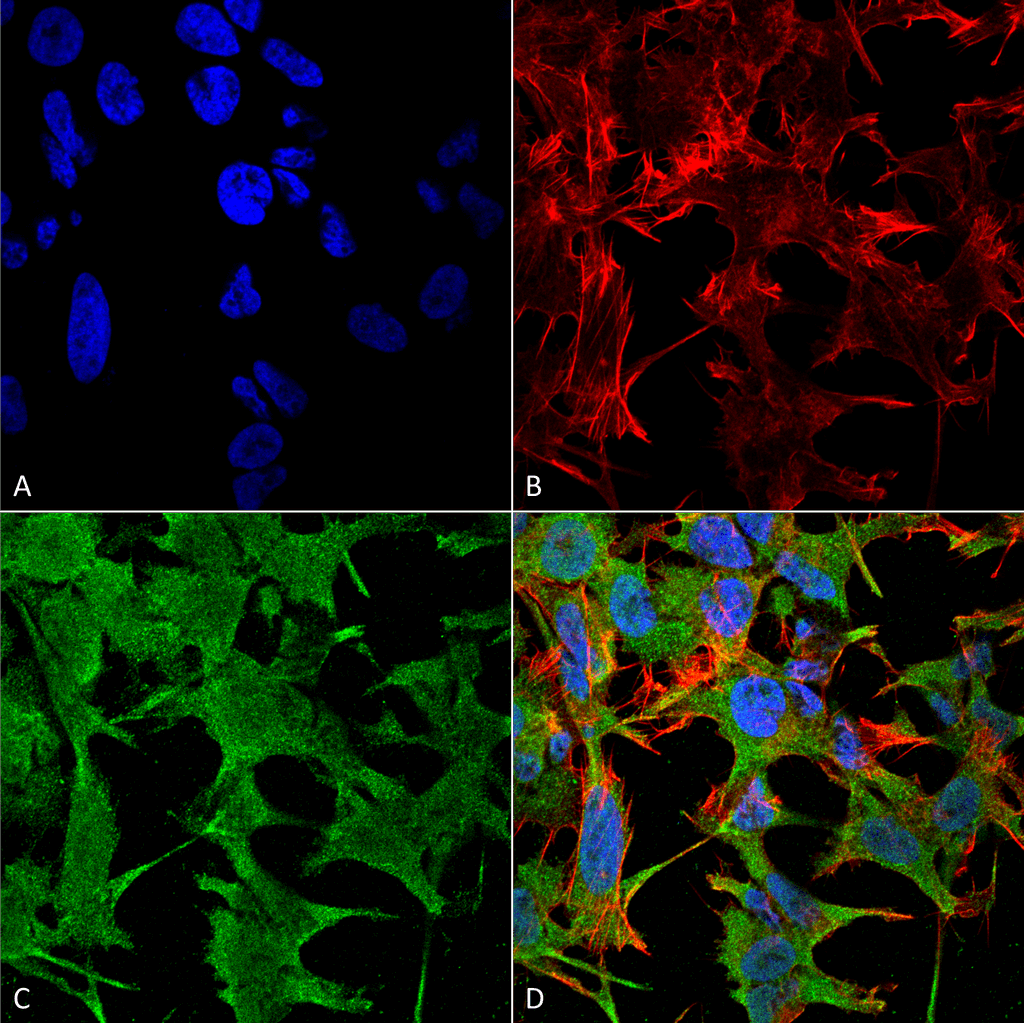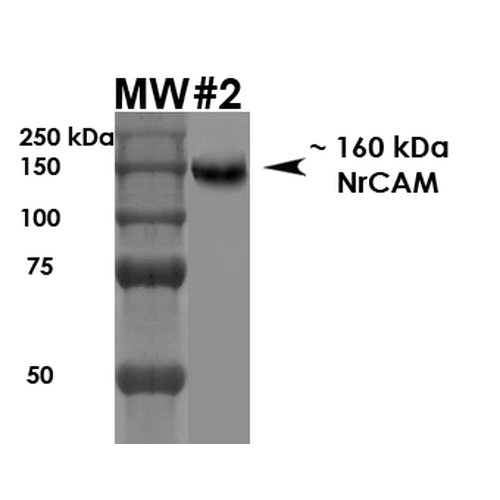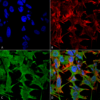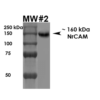Anti-Neuronal Cell Adhesion Molecule (NRCAM) Antibody (56581)
$466.00
SKU: 56581
Categories: Antibody Products, Neuroscience and Signal Transduction Antibodies
Overview
Product Name Anti-Neuronal Cell Adhesion Molecule (NRCAM) Antibody (56581)
Description Anti-Neuronal Cell Adhesion Molecule (NRCAM) Mouse Monoclonal Antibody
Target Neuronal Cell Adhesion Molecule (NRCAM)
Species Reactivity Human, Mouse, Rat
Applications WB,ICC/IF
Host Mouse
Clonality Monoclonal
Clone ID S343-26
Isotype IgG2a
Immunogen Fusion protein corresponding to aa 30-845 (extracellular domain) of mouse NRCAM. This sequence is 96
Properties
Form Liquid
Concentration 1.0 mg/mL
Formulation PBS, pH 7.4, 0.1% sodium azide, 50% glycerol.
Buffer Formulation Phosphate Buffered Saline
Buffer pH pH 7.4
Buffer Anti-Microbial 0.1% Sodium Azide
Buffer Cryopreservative 50% Glycerol
Format Purified
Purification Purified by Protein G affinity chromatography
Specificity Information
Specificity This antibody recognizes human, mouse, and rat NRCAM.
Target Name Neuronal cell adhesion molecule
Target ID Neuronal Cell Adhesion Molecule (NRCAM)
Uniprot ID Q810U4
Alternative Names Nr-CAM, Neuronal surface protein Bravo, mBravo, NgCAM-related cell adhesion molecule, Ng-CAM-related
Gene Name Nrcam
Sequence Location Cell membrane, Cell projection, axon, Secreted
Biological Function Cell adhesion protein that is required for normal responses to cell-cell contacts in brain and in the peripheral nervous system. Plays a role in neurite outgrowth in response to contactin binding (PubMed:11564762). Plays a role in mediating cell-cell contacts between Schwann cells and axons (PubMed:20188654). Plays a role in the formation and maintenance of the nodes of Ranvier on myelinated axons. Nodes of Ranvier contain clustered sodium channels that are crucial for the saltatory propagation of action potentials along myelinated axons. During development, nodes of Ranvier are formed by the fusion of two heminodes. Required for normal clustering of sodium channels at heminodes; not required for the formation of mature nodes with normal sodium channel clusters (PubMed:14602817, PubMed:20188654). Required, together with GLDN, for maintaining NFASC and sodium channel clusters at mature nodes of Ranvier (PubMed:24719088). {PubMed:11564762, PubMed:14602817, PubMed:16039564, PubMed:20188654, PubMed:24719088}.
Research Areas Neuroscience
Background The NRCAM gene encodes a neuronal cell adhesion molecule with multiple immunoglobulin-like C2-type domains and fibronectin type-III domains. This ankyrin-binding protein is involved in neuron-neuron adhesion and promotes directional signaling during axonal cone growth. This gene is also expressed in non-neural tissues and may play a general role in cell-cell communication via signaling from its intracellular domain to the actin cytoskeleton during directional cell migration. Allelic variants of this gene have been associated with autism and addiction vulnerability. Alternative splicing results in multiple transcript variants encoding different isoforms.
Application Images




Description Immunocytochemistry/Immunofluorescence analysis using Mouse Anti-NrCAM Monoclonal Antibody, Clone S364-51 (56581). Tissue: Neuroblastoma cells (SH-SY5Y). Species: Human. Fixation: 4% PFA for 15 min. Primary Antibody: Mouse Anti-NrCAM Monoclonal Antibody (56581) at 1:100 for overnight at 4°C with slow rocking. Secondary Antibody: AlexaFluor 488 at 1:1000 for 1 hour at RT. Counterstain: Phalloidin-iFluor 647 (red) F-Actin stain; Hoechst (blue) nuclear stain at 1:800, 1.6mM for 20 min at RT. (A) Hoechst (blue) nuclear stain. (B) Phalloidin-iFluor 647 (red) F-Actin stain. (C) NrCAM Antibody (D) Composite.

Description Immunocytochemistry/Immunofluorescence analysis using Mouse Anti-NrCAM Monoclonal Antibody, Clone S364-51 (56581). Tissue: Neuroblastoma cell line (SK-N-BE). Species: Human. Fixation: 4% Formaldehyde for 15 min at RT. Primary Antibody: Mouse Anti-NrCAM Monoclonal Antibody (56581) at 1:100 for 60 min at RT. Secondary Antibody: Goat Anti-Mouse ATTO 488 at 1:100 for 60 min at RT. Counterstain: Phalloidin Texas Red F-Actin stain; DAPI (blue) nuclear stain at 1:1000, 1:5000 for 60min RT, 5min RT. Localization: Cell Membrane. Magnification: 60X. (A) DAPI (blue) nuclear stain. (B) Phalloidin Texas Red F-Actin stain. (C) NrCAM Antibody. (D) Composite.

Description Western Blot analysis of Rat Brain Membrane showing detection of ~160 kDa NrCam protein using Mouse Anti-NrCam Monoclonal Antibody, Clone S364-51 (56581). Load: 10 µg. Primary Antibody: Mouse Anti-NrCam Monoclonal Antibody (56581) at 1:1000 for 1 hour at RT. Secondary Antibody: Goat Anti-Mouse HRP at 1:200 for 1 hour at RT. Predicted/Observed Size: ~160 kDa.
Handling
Storage This product is stable for at least one (1) year at -20°C.
Dilution Instructions Dilute in PBS or medium that is identical to that used in the assay system.
Application Instructions Immunoblotting: use at 1-5ug/mL. A band of ~160kDa is detected.
Immunofluorescence: use at 10ug/mL.
These are recommended concentrations.
Endusers should determine optimal concentrations for their application.
Immunofluorescence: use at 10ug/mL.
These are recommended concentrations.
Endusers should determine optimal concentrations for their application.
References & Data Sheet
Data Sheet  Download PDF Data Sheet
Download PDF Data Sheet
 Download PDF Data Sheet
Download PDF Data Sheet

